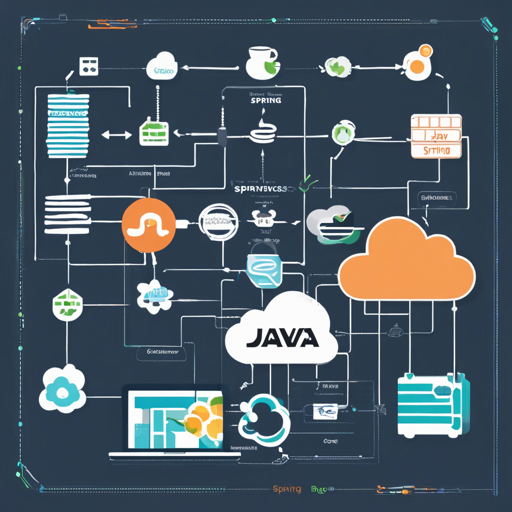Welcome to the world of microservices! In this guide, we will walk you through the steps needed to create a robust microservices architecture using Java, Spring Boot, Spring Cloud, and Netflix Eureka.
Getting Started
Our repository features five comprehensive examples that will guide you in utilizing crucial technologies for building scalable microservices. Here’s a snapshot of what you’ll explore:
- A simple microservices architecture with Spring Boot, Spring Cloud, Eureka Server, and Zuul.
- A generated microservices architecture using JHipster with centralized configuration through Spring Cloud Config.
- A reactive microservices architecture utilizing Spring Cloud Gateway and Spring WebFlux.
- A JHipster-enabled reactive microservices architecture with Spring Cloud Gateway.
- A JHipster 7 + Kubernetes deployment example on Google Cloud, including sealed secrets.
Are you excited yet? Let’s dive into how to set up our first microservices architecture!
Spring Boot + Spring Cloud Example
Here’s how to install this basic configuration:
git clone https://github.com/oktadev/java-microservices-examples.git
cd java-microservices-examples/spring-boot+cloudThe api-gateway and car-service projects are pre-configured with OAuth 2.0 and Okta. It’s important to create an account and an application in Okta to proceed.
Creating a Web Application in Okta
- Log in to your Okta Developer account (or sign up if you don’t have an account).
- Select **Add Application** from the Applications page.
- Choose **Web** in the Create New Application page.
- Name your app, set the Login redirect URI to http://localhost:8080/login/oauth2/code/okta, select **Refresh Token** alongside **Authorization Code**, and click **Done**.
- Copy the issuer from API > Authorization Servers, along with the client ID and client secret into the
application.propertiesfiles of both theapi-gatewayandcar-serviceprojects.
Navigating the Example
To see the registered applications, run all projects using .mvnw in separate terminal windows. You should be able to visit http://localhost:8761 to view the apps registered with Eureka. Next, navigate to http://localhost:8080/cool-cars in your browser, log in with Okta, and check out the resulting JSON.
Understanding Microservices Architecture with Anecdote
Think of your microservices as a group of chefs in a large restaurant kitchen. Each chef specializes in different dishes (microservices), and together, they create a delicious menu (application). The Spring Boot acts as the individual chef preparing the dish with the fresh ingredients (code), while Spring Cloud facilitates their communication and ensures everyone works in harmony. Netflix Eureka plays the role of the master schedule, allowing chefs (microservices) to find each other amidst all the kitchen chaos, uplifting their collaboration to a higher level.
Troubleshooting Suggestions
If you encounter issues, here are some troubleshooting tips:
- Ensure your Okta credentials are correctly set in the
application.propertiesfiles. - Check if all services are running by executing
docker psor checking terminal outputs for errors. - Verify your microservices’ ports in the project settings to avoid conflicts.
- For more insights, updates, or to collaborate on AI development projects, stay connected with fxis.ai.
Final Thoughts
At fxis.ai, we believe that such advancements are crucial for the future of AI, as they enable more comprehensive and effective solutions. Our team is continually exploring new methodologies to push the envelope in artificial intelligence, ensuring that our clients benefit from the latest technological innovations.
In this article, we explored basic concepts and practical steps to create a Java microservices architecture using Spring Boot and Spring Cloud. Happy coding!

